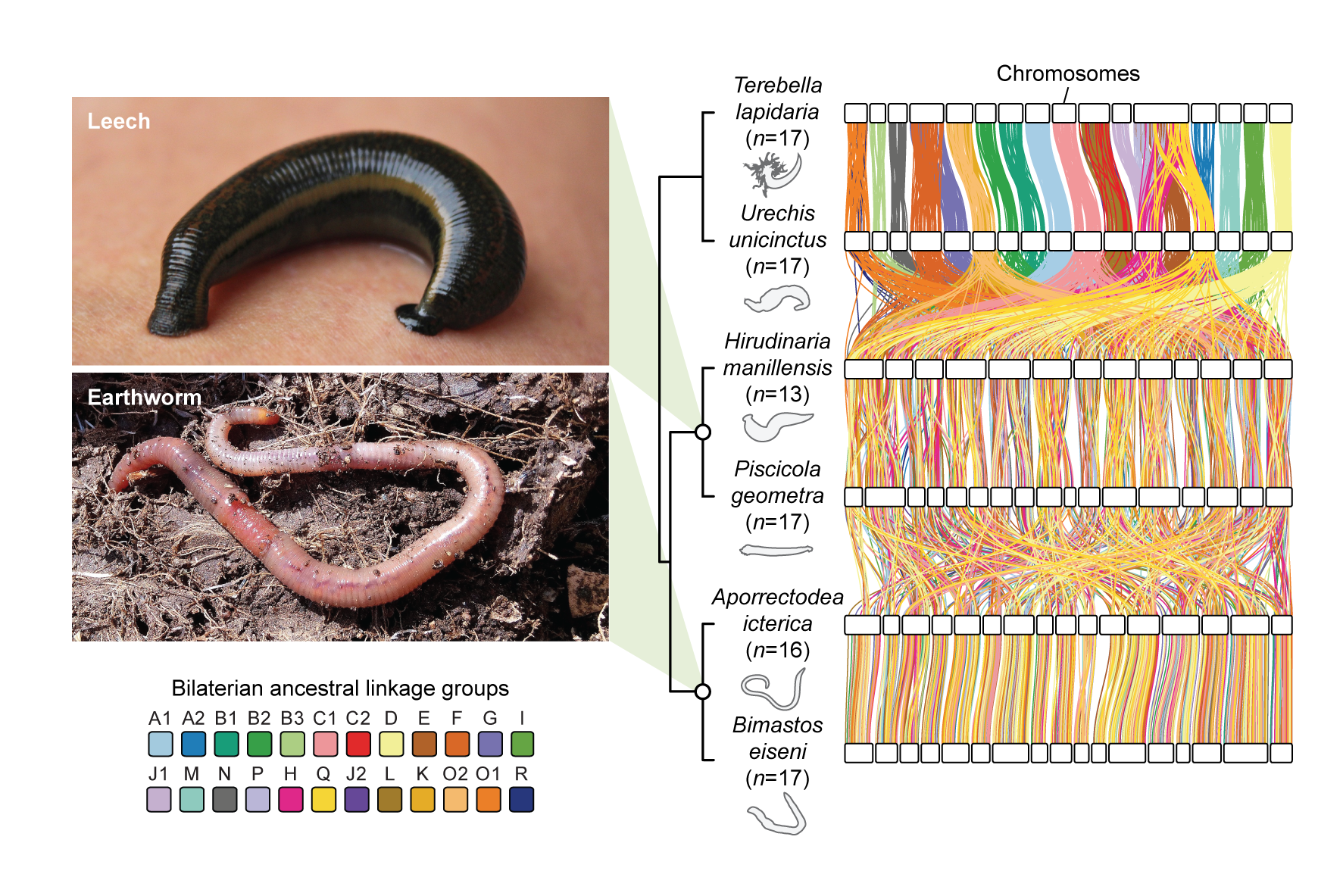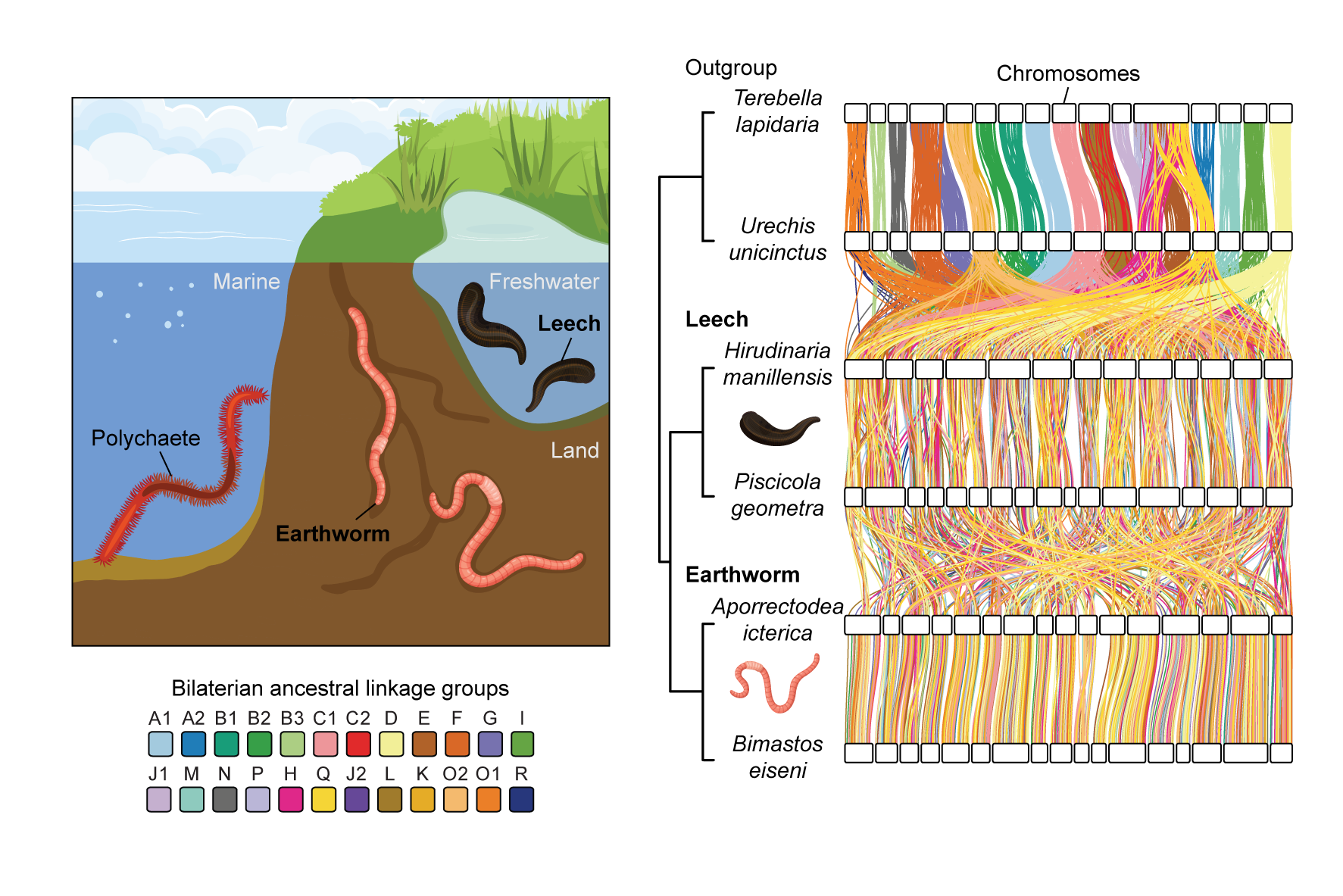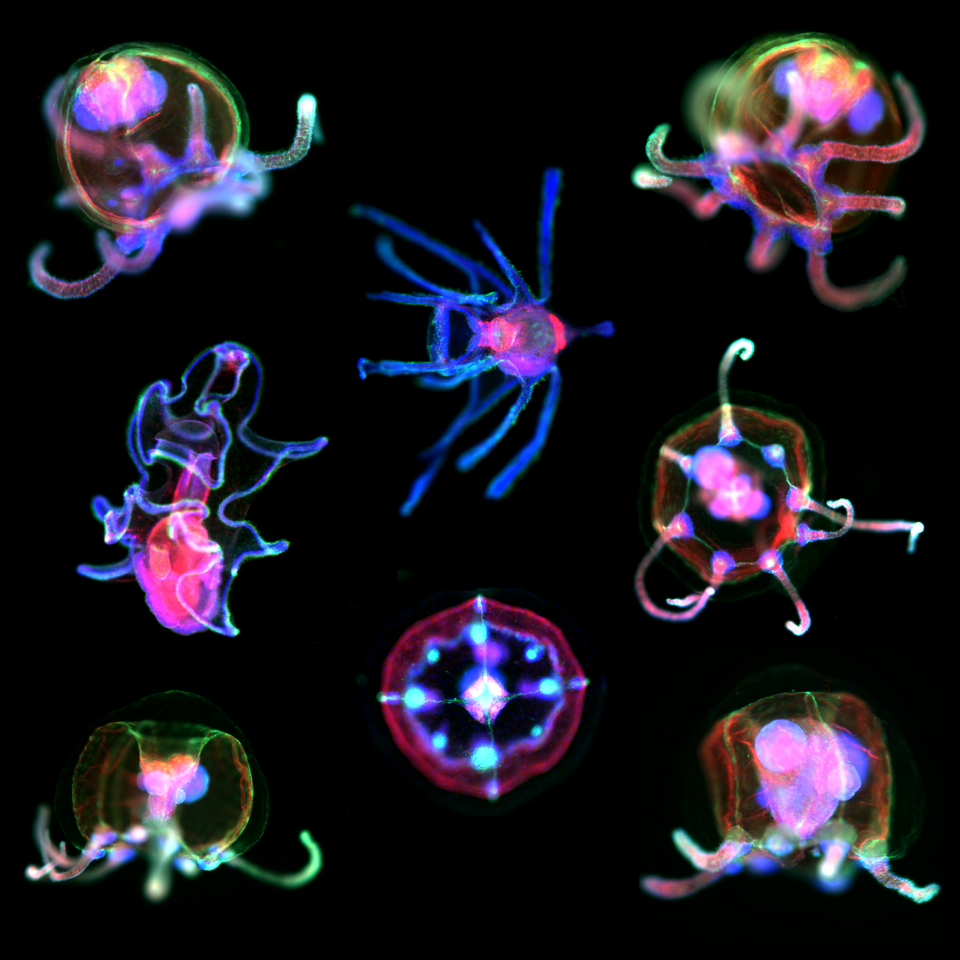Annelid genomes provide new insights into the evolution of animal chromosome structures

Some bilateral animals have highly specialized genomes, especially model organisms like fruit flies, nematodes, zebrafish, and planarians. Evolutionary biologists have noted this specialization since their genomes were sequenced. Conversely, marine invertebrates such as sea urchins, amphioxus, scallops, and ribbon worms exhibit conserved genome structures unchanged for over 500 million years. Typically, a phylum's genome structure is either conserved or specialized. Studies on Annelida, however, reveal a rare exception.
Most annelids are marine, but some live on land and in freshwater. Assistant Research Fellow Yi-Jyun Luo's team from the Biodiversity Research Center analyzed the chromosomal-level genomes of 23 annelid species. They found that while most annelids have conserved genome structures, Clitellates, including leeches and earthworms, are entirely different. The team developed a rearrangement index, showing that leeches and earthworms possess the most highly rearranged genomes among bilaterians. The research, published in August 2024 in Molecular Biology and Evolution, was funded by the Academia Sinica Career Development Award.

Some bilateral animals have highly specialized genomes, especially model systems such as fruit flies, nematodes, zebrafish, and planarians. Evolutionary biologists have noted this specialization since these genomes were sequenced. However, a significant group of marine invertebrates, such as sea urchins, amphioxus, scallops, and ribbon worms, exhibit relatively conserved genome structures that have remained unchanged for more than 500 million years. Typically, if a phylum has conserved genome structures, all species within that phylum will show conservation, and if specialized, all species will exhibit specialization. However, studies on the phylum Annelida have revealed a rare evolutionary exception.
Most annelids are marine, but a large group lives on land and in freshwater. The research team led by Assistant Research Fellow Yi-Jyun Luo from the Biodiversity Research Center analyzed the chromosomal-level genomes of 23 annelid species. They found that most annelids have maintained the conserved genome structures typical of bilaterians. However, the genomes of the group that includes leeches and earthworms, known as Clitellates, are entirely different from those of other animals. The study, led by first author Thomas Lewin, discovered that during the evolution of clitellates from marine to terrestrial and freshwater environments, their genome structures underwent significant and impactful changes.
The team developed a rearrangement index to quantify genome structure evolution. This index revealed that leeches and earthworms possess the most highly rearranged genomes among bilaterians. They also found that animal chromosome structures could be categorized into high and low rearrangement groups, primarily related to chromosomal fission capability. Acquiring transposable elements and extensive gene loss may be crucial factors in chromosomal structure changes. This research will contribute to understanding the molecular mechanisms underlying massive chromosome rearrangements in animals. The findings were published in August 2024 in the journal Molecular Biology and Evolution. The research was funded by the Academia Sinicia Career Development Award.
Lewin TD, Liao IJY, Luo YJ* (2024) Annelid comparative genomics and the evolution of massive lineage-specific genome rearrangement in bilaterians. Molecular Biology and Evolution 41, msae172. https://doi.org/10.1093/molbev/msae172





